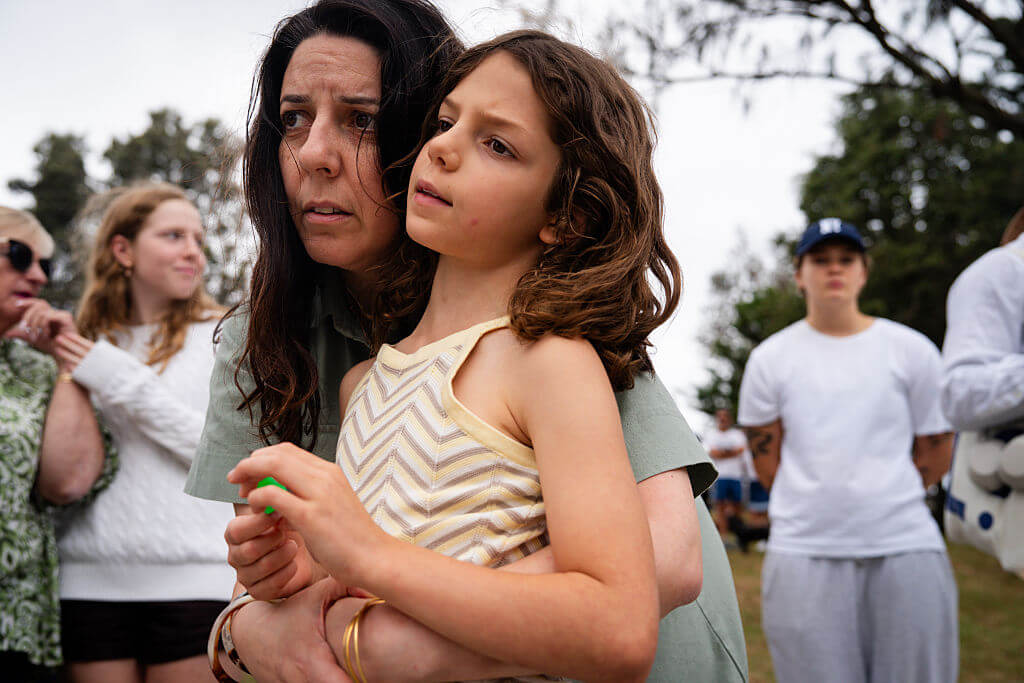Arts Group Broadens Its Horizons
ARTIST LEROY NEIMAN HELPS LAUNCH AN ARTS CENTER
“I feel like I am in Paris,” said a guest arriving at the West 67th Street high-ceilinged, paintings-filled atelier of artist Leroy Neiman for the March 24 cocktail launch of the Arts Horizon LeRoy Neiman Center. Among the guests were Neil Sedaka, Michael Feinstein, Charles “Chip” Fisher (son of Avery Fisher) and hockey legend Rod Gilbert. Also in attendance was Arts Horizon Chairman Celeste Holm, who was about to celebrate her 91st birthday. (Holm won an Academy Award for her role in the 1947 film “Gentlemen’s Agreement,” based on a novel by Laura Z. Hobson [nee Zametkin] about antisemitism. FYI: Hobson’s father was a founder of the Forverts and was the paper’s first editor, preceding Abraham Cahan. Founded in 1978 by John Devol, Arts Horizon offers access to the arts to 30,000 children annually in schools, hospitals and the community at large. “We use the arts to teach math, science and social studies,” Devol said. Standing in front of his work-in-progress painting of a tiger, a mustachioed Neiman, who helped fund the center, joshed: “Nice looking group of people here. Art is an enjoyable process. The only difficult part of it is making a living.”
JEWISH WOMEN’S FOUNDATION BENEFIT HONORS FOUR REMARKABLE WOMEN
“The filmmaker Jean Renoir was neither female nor Jewish, but he displayed a keen understanding of both identities when he likened the film director to a midwife,” said Annette Insdorf, an honoree at the Women’s Foundation of New York’s April 10 luncheon at the Pierre Hotel. Insdorf, director of undergraduate film studies at Columbia University, added, “His business is to deliver the actor of a child that he didn’t know he had inside him… I believe that my own teaching of cinema and my writing about film are inseparable from my Jewish/female identity. “After first seeing ‘Night and Fog’ as a graduate student at Yale,” Insdorf said, “for the first time, I had an inkling of what my parents… had endured.… It occurred to me that if I, the only child of Holocaust survivors, need a motion picture to frame the horror and thus give it meaning, what about others?” Touted in the program journal as “perhaps the most influential film educator in America,” her award-winning incisive reference book, “Indelible Shadows: Film and the Holocaust,” is a film lover’s must-have volume. Insdorf hailed “filmmakers, whose work I consistently champion — François Truffaut, Krzysztof Kieslowski — artists whose ethics are clearly imbedded within their aesthetics.”
“I never thought of Jewish women as victims of domestic violence,” said philanthropist and art collector Melva Bucksbaum, a foundation honoree. She recalled her visit to the Mayo clinic years ago, when a severely beaten pregnant woman was crying. “I should have gone to the front desk and called the police,” she said ruefully. “Glad to see the foundation is addressing this issue.” In 2003, 2004, 2005, 2006 and 2007, she and her husband, Raymond Learsy, were listed by Art News as one of the top 200 collectors in the world. Honoree Darcy Miller Nussbaum, who is senior vice president and Weddings editorial director at Martha Stewart Living Omnimedia, was “shocked!” to learn that flowers were not permitted at foundation luncheons. “Martha would not approve,” Nussbaum said. The benefit also honored Jane Weitzman, vice president of Stuart Weitzman, LLC. Her many “hats” include a founder of the Women’s Division of UJA-Federation of Greenwich and a board member of the American Israel Public Affairs Committee.
The foundation offers grants to help improve the life of Jewish women. It addresses hidden issues for Jewish women, like domestic violence, alcoholism and drug use, as well as a roster of social, religious and economic concerns. One of the foundation’s 2008 grant recipients is the Ruth and Emanuel Rackman Center. This project is designed “to encourage engaged couples in Israel to sign prenuptial agreements in order to avoid the decline of women’s financial situations in the event of divorce.”
SEDER TREAT FOR 60 DIPLOMATS, COURTESY OF AMERICAN JEWISH COMMITTEE
If only the United Nations could be as congenial an arena as was the April 10 American Jewish Committee’s Diplomatic Model Seder, which introduced diplomats from more than 60 countries to what for most of them was something of a mystery. The AJComittee’s Annual Diplomatic Model Seder Jewish festival was held at the architecturally spectacular sanctuary of upper Manhattan’s Congregation B’nai Jeshurun. At each place setting was “The Jewish World Family Haggadah” with a sub-notation, “The first contemporary Passover Haggadah featuring photographs of Jews from around the world” — a reminder to many of the diplomats in the room that Passover had been celebrated in their countries, as well, for hundreds if not thousands of years. The Seder was led by Argentine-born rabbi Rolando Matalon, whose accented-English no doubt sounded haimish to the diplomats in the room who were from Mexico, and Central and South America. Matalon described mitzrayim not as the Egypt of yore but as “a narrow place” from whence the Jews journeyed to “a real place, Israel — a place of safety.” He explained to the (diplomatic) “strangers” at the AJCommittee-member mentored tables that this was a 3,300-year uninterrupted festival “as noted in Exodus,” and that it was a journey for freedom. He may have had several specific countries (and their diplomats) in mind when he declared: “If you can’t question, you are not free.… A sign of oppression is to lose the capacity to articulate your story.… If there is no independent thinking, people are objectified and act mechanically.”
The sanctuary was abuzz with hosts and guests exchanging information about the details of the Seder and about the guests’ countries. There was music, singing and superb food. I suspect the best Seder ambassador may well have been gastronomic. My tablemates — consuls from Slovakia and Croatia — could not get enough of the haroset. For them, the mystery questions were, “What’s in it and how do you make it?”
















